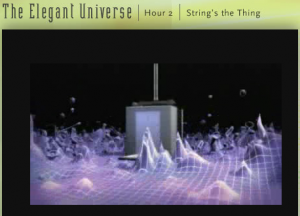A nice explanation, from the excellent Real Engineering channel, of the physics of GPS that explains how the satellites must adjust for the effects of special and general relativity.
Tag: relativity
Relativity in a Canoe

Perhaps not surprisingly, my middle school students have a difficult time wrapping their heads around the idea of multiple frames of reference. We were in a canoe on the Current River and I asked the student paddling in the rear of the boat to look at me and answer the question, “Are we in the canoe moving, or are we steady in one spot and everything around us moving?”
This resulted in some serious cognitive processing. And she still has not gotten back to me with an answer.
Another student, faced with the same question, thought it over overnight and concluded that it was a riddle. He figured the correct answer was that the canoe was moving and the land was still. I asked him to think about it a little more (because he was only half right).
Interestingly enough, I’ll be teaching my Advanced Physics class this block, and the first chapter has a neat little section on coordinate systems. I’m curious to see if the 11th and 12th graders have an easier time with the concept.

Faster than Light
Physicists at CERN believe they’ve measured neutrinos moving faster than the speed of light. Since most of modern physics is based on the speed of light being the upper speed limit for practically everything, (remember, in E=mc2, c is the speed of light) this is somewhat of a big deal. NPR has an article:
Notes
1. Neutrinos themselves are quite fascinating and elusive particles. Sciencemadefun has a nice video explaining what is a neutrino.
2. Victor Stenger provides an interesting perspective on these results. He points out that the theoretical particles, tachyons, move faster than light, but they can’t move slower than light, so, seen from the point of view of a tachyon, time would move backward. Only photons move at the speed of light.
About The Elegant Universe
NOVA’s program The Elegant Universe has an excellent website where the entire three hour video is available for free (with a full screen option). They have also broken the video up into segments and have a great teachers’ page which summarizes what’s in each segment.

Created in 2003, when string theory was making it’s big splash in the popular consciousness, The Elegant Universe starts with Newton’s observations of gravity, shows Einstein’s separate explanations of why gravity works and the nature of the sub-atomic world, and finally delves into string theory which tries to reconcile Einstein’s two theories into a unified whole.
We don’t usually get past Newton in middle school, but this PBS program introduces such a wider and weirder view of the universe that it can help strike the imagination. It also presents complex concepts in an intelligible way.